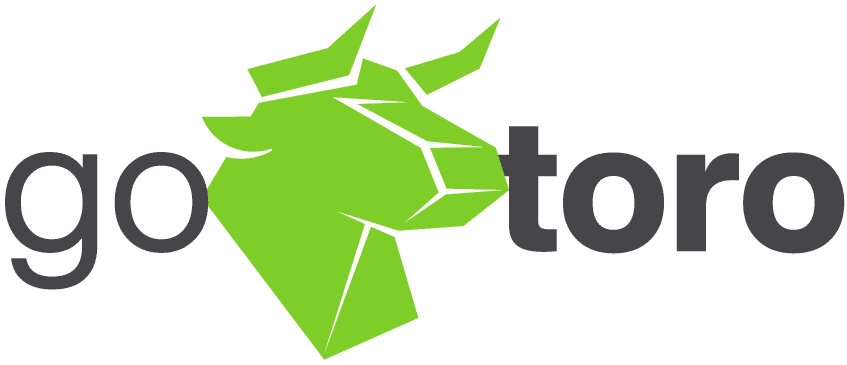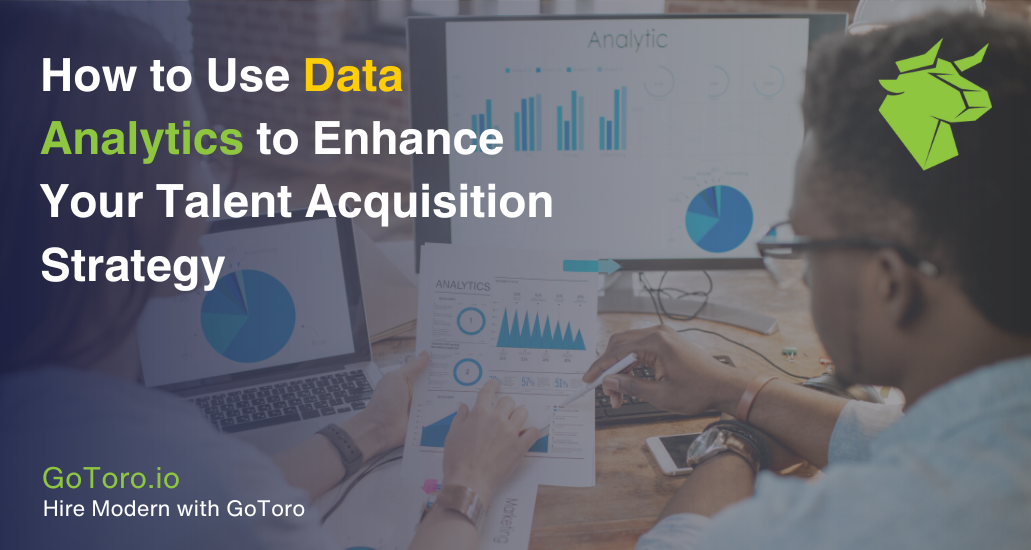Brief Overview of the Evolution of Talent Acquisition
Talent acquisition has significantly evolved over the years, transitioning from traditional hiring practices to more sophisticated, data-driven approaches. Initially, recruitment relied heavily on manual processes, personal networks, and gut instincts. The advent of technology introduced applicant tracking systems (ATS), online job boards, and social media platforms, broadening the talent pool and streamlining hiring processes. Today, the integration of data analytics in talent acquisition has revolutionized the way organizations attract, assess, and retain talent. By leveraging vast amounts of data, recruiters can make more informed decisions, predict hiring needs, and create more personalized candidate experiences.
Importance of Integrating Data Analytics in Recruitment

Integrating data analytics in recruitment is no longer a luxury but a necessity for organizations aiming to stay competitive. Data analytics provides actionable insights that help recruiters identify the most effective sourcing channels, understand candidate behavior, and optimize the entire hiring process. By utilizing data, companies can reduce biases, enhance the quality of hires, and ensure a more efficient and effective recruitment strategy. Moreover, data-driven recruitment enables continuous improvement by providing measurable results and feedback loops that inform future hiring practices.
Benefits of Data-Driven Talent Acquisition
Improved Decision-Making
One of the primary benefits of data-driven talent acquisition is improved decision-making. With access to detailed analytics, recruiters can base their decisions on empirical evidence rather than intuition. Data analytics in recruitment allows for a deeper understanding of candidate qualifications, past performance, and potential fit within the organization. This leads to more accurate hiring decisions and ultimately reduces turnover rates.
Enhanced Candidate Experience
Data analytics in talent acquisition also plays a crucial role in enhancing the candidate experience. By analyzing candidate interactions and feedback, recruiters can identify pain points and areas for improvement. Personalized communication and targeted job recommendations based on data insights ensure candidates feel valued and engaged throughout the recruitment process. An improved candidate experience not only attracts top talent but also builds a positive employer brand.
Increased Hiring Efficiency
Efficiency is another significant advantage of data-driven talent acquisition. Data analytics helps streamline various stages of the hiring process, from sourcing and screening to interviewing and onboarding. By automating repetitive tasks and utilizing predictive analytics, recruiters can identify the most qualified candidates faster and with greater accuracy. This reduces the time-to-hire and cost-per-hire, allowing organizations to fill positions quickly and efficiently.
Identifying Key Metrics: Important Metrics to Track
Time-to-Hire
Time-to-hire is a critical metric in data analytics for talent acquisition. It measures the duration from when a job opening is posted to when an offer is accepted. By tracking this metric, organizations can identify bottlenecks in their hiring process and implement strategies to reduce delays. A shorter time-to-hire not only improves efficiency but also ensures that top candidates remain engaged and interested in the position.
Cost-per-Hire
Cost-per-hire is another essential metric that helps organizations understand the financial investment involved in the recruitment process. This metric includes advertising costs, recruiter salaries, and other related expenses. By analyzing cost-per-hire data, companies can identify the most cost-effective recruitment channels and optimize their budget allocation. Lowering the cost-per-hire without compromising the quality of hires is a key goal of data-driven recruitment.
Quality of Hire
Quality of hire is arguably one of the most important metrics in data analytics for recruitment. It evaluates the performance and contribution of new hires to the organization. By tracking metrics such as job performance, retention rates, and employee engagement, recruiters can assess the effectiveness of their hiring strategies. High-quality hires lead to better organizational performance and reduced turnover, making this a crucial metric for continuous improvement.
Candidate Source Effectiveness
Understanding which sourcing channels yield the best candidates is vital for optimizing recruitment efforts. Candidate source effectiveness measures the success rate of various recruitment channels, such as job boards, social media, and employee referrals. Data analytics allows recruiters to identify which sources provide the highest quality candidates and allocate resources accordingly. This ensures a more targeted and efficient approach to sourcing talent.
Candidate Drop-off Rates
Candidate drop-off rates measure the number of candidates who abandon the recruitment process at various stages. High drop-off rates can indicate issues with the application process, communication, or candidate experience. By analyzing drop-off data, recruiters can pinpoint problem areas and make necessary adjustments to reduce candidate attrition. Lowering drop-off rates is essential for maintaining a robust talent pipeline and ensuring a smooth recruitment process.
Incorporating these key metrics into a data-driven talent acquisition strategy allows organizations to optimize their recruitment processes, make informed decisions, and continuously improve their hiring outcomes. By leveraging the power of data analytics in recruitment, companies can achieve a more efficient, effective, and equitable approach to talent acquisition.
Sourcing Candidates: Using Data to Identify the Best Talent Pools and Sourcing Channels

Utilizing Demographic and Performance Data
Effective sourcing is a cornerstone of successful recruitment, and data analytics in recruitment plays a vital role in identifying the best talent pools and sourcing channels. By leveraging demographic and performance data, recruiters can target specific populations that are more likely to possess the desired skills and qualifications. This data-driven approach ensures that recruitment efforts are focused on areas with the highest potential yield, ultimately improving the quality of candidates and reducing time-to-hire.
GoToro’s Omni-Channel Approach
GoToro employs an omni-channel approach to talent acquisition, utilizing a diverse array of sourcing channels to reach a broad and unique audience. This strategy includes:
Major Career Boards
Major career boards are a fundamental component of GoToro’s sourcing strategy. These platforms provide access to a vast pool of active job seekers, making it easier to find candidates with the right skills and experience. Data analytics in recruitment allows GoToro to analyze the effectiveness of various career boards, ensuring resources are allocated to the most productive platforms.
Career Sites
Dedicated career sites are another critical sourcing channel. By analyzing traffic patterns, candidate behavior, and application rates, GoToro can optimize its career site to attract and engage top talent. Data analytics provides insights into which job postings generate the most interest and which parts of the site need improvement, enhancing the overall candidate experience.
Niche Sites
Niche sites target specific industries or professional groups, offering a more focused approach to sourcing candidates. GoToro leverages data analytics to identify the most effective niche sites for different roles, ensuring that job postings reach the most relevant audiences. This targeted approach increases the likelihood of finding candidates with specialized skills and qualifications.
Social Media
Social media platforms are increasingly important in modern recruitment. GoToro uses data analytics to track engagement metrics, such as likes, shares, and comments, to gauge the effectiveness of its social media recruitment efforts. By identifying which platforms and types of content resonate most with potential candidates, GoToro can refine its social media strategy to attract high-quality talent.
Candidate Screening: Leveraging Data Analytics to Improve the Screening Process

Automating Resume Screening
Automating the resume screening process is one of the most significant benefits of data analytics in talent acquisition. By using advanced algorithms and machine learning, recruiters can quickly sift through large volumes of resumes to identify candidates who meet the required criteria. This automation reduces the time and effort spent on initial screening, allowing recruiters to focus on more critical aspects of the hiring process.
Predictive Analytics for Candidate Success
Predictive analytics in recruitment involves using historical data to forecast the potential success of candidates. By analyzing past hiring data, performance metrics, and other relevant factors, recruiters can identify patterns that predict a candidate’s future performance. This data-driven approach helps in selecting candidates who are more likely to thrive in the role and contribute to the organization’s success.
Reducing Time and Resources in Initial Screening
Data analytics streamlines the initial screening process, reducing the time and resources required to identify top candidates. Automated screening tools can quickly evaluate resumes and applications, flagging the most promising candidates for further review. This efficiency not only speeds up the hiring process but also ensures that recruiters spend their time on high-value activities, such as interviewing and candidate engagement.
Predictive Analytics: Using Historical Data to Predict Future Hiring Needs and Trends
Workforce Planning and Forecasting
Predictive analytics in talent acquisition is essential for effective workforce planning and forecasting. By analyzing historical hiring data and industry trends, recruiters can anticipate future hiring needs and develop strategies to meet those demands. This proactive approach ensures that organizations are prepared for growth and can quickly respond to changes in the labor market.
Identifying Skills Gaps and Future Roles
Another critical application of predictive analytics in recruitment is identifying skills gaps and future roles. By examining current workforce capabilities and comparing them to future business needs, recruiters can pinpoint areas where additional skills are required. This insight allows organizations to implement targeted training programs and develop internal talent pipelines to fill anticipated gaps. Additionally, predictive analytics can highlight emerging roles and skills that will be crucial in the future, enabling organizations to stay ahead of the curve in talent acquisition.
By integrating data analytics in recruitment, organizations can make more informed decisions, improve the efficiency of their hiring processes, and better align their talent acquisition strategies with future business needs. This data-driven approach not only enhances the quality of hires but also ensures that organizations are well-positioned to meet the challenges of a dynamic and competitive labor market.
Personalization: Tailoring the Recruitment Process Based on Candidate Data to Improve Engagement
Personalized Job Recommendations
Personalization is a powerful tool in data analytics for recruitment. By analyzing candidate data such as previous job searches, application history, and professional skills, recruiters can provide personalized job recommendations. This tailored approach ensures that candidates receive job suggestions that align closely with their qualifications and career goals, increasing the likelihood of applications and improving the overall candidate experience.
Customized Communication Strategies
Effective communication is crucial for engaging potential candidates, and data analytics in talent acquisition allows for the customization of communication strategies. By examining candidate preferences and behaviors, recruiters can craft personalized messages that resonate more deeply with individuals. Customized communication can include tailored email content, personalized follow-up messages, and targeted social media interactions, all designed to maintain candidate interest and foster a positive recruitment experience.
Performance Tracking: Monitoring the Effectiveness of Your Talent Acquisition Strategy Through Data
Setting Up Performance Dashboards
Performance tracking is essential for understanding the effectiveness of your talent acquisition strategy, and data analytics in recruitment provides the tools needed to monitor key metrics. Setting up performance dashboards allows recruiters to visualize data in real-time, making it easier to track progress and identify areas for improvement. These dashboards can display various metrics, such as time-to-hire, cost-per-hire, and candidate satisfaction scores, providing a comprehensive view of the recruitment process.
Key Performance Indicators (KPIs) for Recruitment
Identifying and monitoring key performance indicators (KPIs) is critical for evaluating the success of your recruitment efforts. Important KPIs in data analytics for talent acquisition include:
- Time-to-hire is the average duration from job posting to candidate acceptance.
- Cost-per-hire is the total cost associated with hiring a new employee.
- Quality of hire is the performance and retention rates of new hires.
- Candidate satisfaction is feedback from candidates regarding their recruitment experience.
- Offer accceptance rate is the percentage of job offers accepted by candidates.
Tracking these KPIs allows recruiters to make data-driven decisions and continuously refine their talent acquisition strategies.
Technology and Tools: Overview of Data Analytics Tools for Recruitment
Applicant Tracking Systems (ATS)
Applicant Tracking Systems (ATS) are fundamental tools in data analytics for recruitment. These systems automate the recruitment process, from job postings to candidate management, and provide valuable data insights. An ATS can track applicant sources, evaluate candidate resumes using keyword analysis, and streamline communication with applicants. By leveraging data from an ATS, recruiters can identify the most effective hiring channels and optimize their recruitment strategies.
Recruitment Marketing Platforms
Recruitment marketing platforms are another essential component of data analytics in talent acquisition. These platforms help recruiters attract and engage candidates through targeted marketing campaigns. They provide analytics on campaign performance, candidate engagement, and source effectiveness. By utilizing recruitment marketing platforms, organizations can create data-driven marketing strategies that enhance their employer brand and attract top talent.
Data Visualization Tools
Data visualization tools are crucial for making sense of complex recruitment data. These tools transform raw data into visual formats such as charts, graphs, and dashboards, making it easier to identify trends and patterns. Data visualization enhances the ability to communicate insights clearly and take actionable steps based on data. Popular data visualization tools used in recruitment include Tableau, Power BI, and Google Data Studio.
Reducing Bias: Using Data to Create Fairer and More Objective Hiring Processes

Anonymizing Candidate Data
Reducing bias in recruitment is a significant challenge, and data analytics offers effective solutions. One approach is anonymizing candidate data during the screening process. By removing identifiable information such as names, gender, and age, recruiters can focus solely on the qualifications and skills of the candidates. This practice helps ensure that hiring decisions are based on merit and reduces the potential for unconscious bias.
Implementing Unbiased Screening Algorithms
Another strategy for reducing bias is implementing unbiased screening algorithms. These algorithms use data analytics to evaluate candidates objectively, based on predefined criteria such as skills, experience, and education. By relying on data-driven assessments, organizations can minimize human biases that might influence hiring decisions. Continuous monitoring and updating of these algorithms are essential to ensure they remain fair and effective.
Incorporating data analytics in recruitment not only enhances the efficiency and effectiveness of the talent acquisition process but also promotes a more equitable and objective approach to hiring. By leveraging technology and data insights, organizations can attract and retain the best talent while fostering a diverse and inclusive workforce.
Measuring Success: Regularly Reviewing and Analyzing Data to Refine Your Talent Acquisition Strategy
Establishing Benchmarks and Goals
Measuring the success of your recruitment strategy begins with establishing clear benchmarks and goals. Data analytics in recruitment allows organizations to set measurable targets based on historical data and industry standards. Benchmarks such as average time-to-hire, cost-per-hire, and candidate satisfaction scores provide a baseline for evaluating the effectiveness of your recruitment efforts. By setting specific, data-driven goals, recruiters can track progress and identify areas that require improvement.
Continuous Feedback Loops
Continuous feedback loops are essential for refining your talent acquisition strategy. By regularly collecting and analyzing feedback from candidates, hiring managers, and other stakeholders, organizations can gain valuable insights into the recruitment process. Data analytics in talent acquisition enables the identification of trends and patterns that may not be immediately apparent. Implementing a feedback loop allows for real-time adjustments and ensures that the recruitment strategy evolves to meet the needs of the organization and the candidates.
Continuous Improvement: Adapting and Evolving Your Strategy Based on Data Insights
Incorporating Feedback and New Data
Continuous improvement is a fundamental aspect of a successful talent acquisition strategy. By incorporating feedback and new data, organizations can make informed decisions that enhance their recruitment efforts. Data analytics in recruitment provides a wealth of information that can be used to fine-tune job descriptions, improve candidate sourcing, and optimize the screening process. Regularly updating your strategy based on data insights ensures that your recruitment practices remain effective and relevant.
Staying Updated with Industry Trends
Staying updated with industry trends is crucial for maintaining a competitive edge in talent acquisition. Data analytics in talent acquisition allows organizations to monitor industry developments and adapt their strategies accordingly. By analyzing market trends, competitor practices, and emerging technologies, recruiters can anticipate changes and proactively adjust their approaches. Keeping abreast of industry trends ensures that your recruitment strategy remains agile and responsive to the evolving job market.
Data analytics in recruitment has become essential for making informed decisions, enhancing candidate experiences, and improving hiring efficiency. Embracing data-driven recruitment strategies ensures that organizations stay competitive and agile in the evolving job market. By continuously refining talent acquisition processes based on data insights, companies can attract and retain top talent, driving long-term success and growth. Ready to transform your recruitment strategy with data analytics? Request a demo from GoToro today and experience the power of data-driven talent acquisition firsthand.


